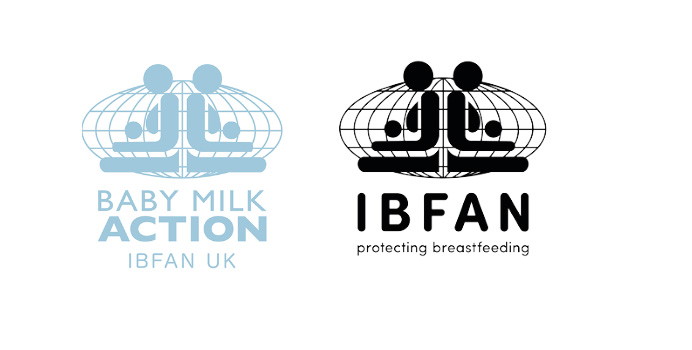This article is relevant to the ongoing discussions at WHO about inappropriate marketing of foods for infants and young children and shows how foods are ‘idealised’ – not only by baby pictures but by vegetables. Below this article are two other pieces of research that are very relevant too.
CLICK HERE for more about the WHO consulation – including HERE a powerpoint presentation.
Nestle sued over claims of false advertisement of the ingredients in its Gerber baby food

Nestle is being sued for allegedly falsely advertising the nutritional ingredients on one of its child food brands.
Michell Gyorke-Takatri and Katie Silver filed the lawsuit on Aug. 13 in California Superior Court against the major food company over its Gerber Graduates Puffs.
The lawsuit claims the company labels the product as though it contains a significant amount of fruits and vegetables because they are “vibrantly” depicted on the packaging.
“In fact, Gerber Graduates Puffs do not contain any, or significant amounts of, the fruits or vegetables shown on the label.” the lawsuit said. “The closest ingredient to fruits or vegetables in the Puffs is little more than a powder.”
The lawsuit said one of the powders was a dried apple puree, and added there was less than one gram of the powder in each serving of the puffs.
The plaintiffs are seeking class status for those who purchased the Gerber products in California over the last four years. They are also seeking an unspecified amount in damages.
The plaintiffs are represented by Matthew J. Zevin of Stanley Law Group in San Diego; Stephen Gardner, Amanda Howell and Scott Kitner of the same law firm in Dallas; and John Roddy and Elizabeth Ryan of Bailey & Glasser LLP in Boston.
Superior Court of California in and for the County of San Francisco case number 3:15-cv-03702.
____________
A Content Analysis of Infant and Toddler Food Advertisements in Taiwanese Popular Pregnancy and Early Parenting Magazines – JHL August 2015, 31(3):458-466
Yi-Chun Chen, Jung-Su Chang, Yu-Tang Gong,
Abstract
Background: Mothers who are exposed to formula advertisements (ads) are less likely to initiate breastfeeding and more likely to breastfeed for a shorter duration than other mothers.
Objective: The purpose of this study was to examine infant and toddler food ads in pregnancy and early parenting magazines.
Methods: A content analysis of infant and toddler food ads printed in 12 issues of 4 magazines published in 2011 was performed. Coding categories of ads included product category, advertisement category, marketing information, and advertising appeal. The target age and health-related message of each product were coded.
Results: The researchers identified 756 infant and toddler food ads in the magazines. Compared with complementary food ads, formula product ads used more marketing strategies such as antenatal classes and baby contests to influence consumers and promote products. Nutritional quality and child health benefits were the two most frequently used advertising appeals. In addition, this study identified 794 formula products and 400 complementary food products; 42.8% of the complementary food products were intended for 4-month-old infants. Furthermore, 91.9% of the ads for formula products and 81% of the ads for complementary food products contained claims concerning health function or nutrient content.
Conclusions: Taiwanese pregnancy and early parenting magazines contain numerous infant and toddler food ads. These ads generally use health-related claims regarding specific nutrient content and health functions to promote infant and toddler foods. Health professionals should provide more information to parents on the differences between breast milk and formula milk, and they should be aware of the potential effect of infant and toddler food ads on parents’ infant feeding decisions.
__________
Nutrients, 2015, (7): 5850-5967. Laboratory Determined Sugar Content and Composition of Commercial Infant Formulas, Baby Foods and Common Grocery Items Targeted to Children.
Abstract
Excess added sugar consumption is tied to poor health outcomes in children. The sugar content of beverages and foods children are exposed to is mostly unknown, yet this information is imperative for understanding potential risks from overconsumption of sugars in early life. We determined actual sugar content by conducting a blinded laboratory analysis in infant formulas, breakfast cereals, packaged baked goods and yogurts. One hundred samples were sent to an independent laboratory for analysis via gas chromatography. Sugar content and composition was determined and total sugar was compared against nutrition labels. Of the 100 samples analyzed, 74% contained ≥20% of total calories per serving from added sugars. Nutrient label data underestimated or overestimated actual sugars and ~25% of all samples had actual total sugar values that were either <10% or >10% of labeled total sugar. Many products that are frequently marketed to and consumed by infants and young children contain sugars in amounts that differ from nutrition labels and often in excess of recommended daily levels. These findings provide further support for adding more comprehensive sugar labeling to food and beverage products, specifically those marketed to, or commonly consumed by, children.
